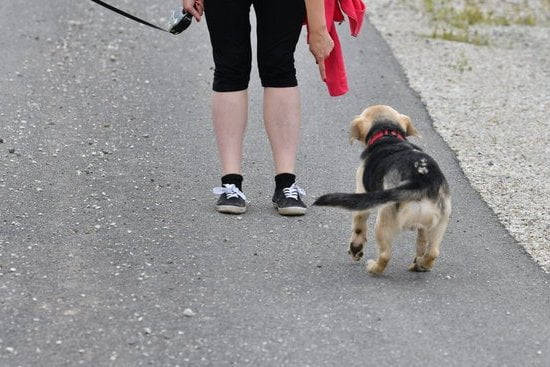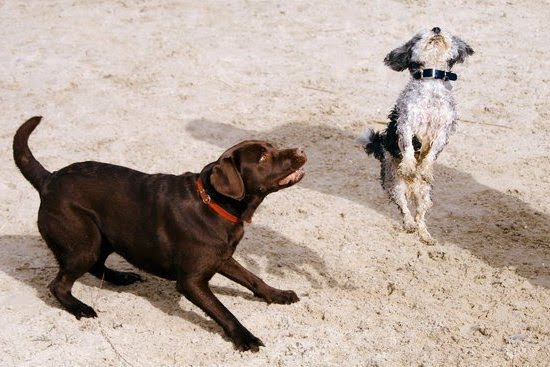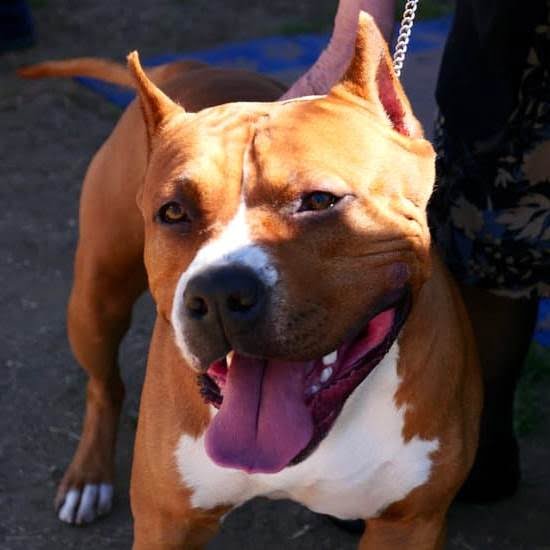Where should I train my dog? Deciding on the best location for training is an important consideration for any pet owner. In this article, we will explore the various indoor and outdoor training options available, as well as the benefits of professional training versus do-it-yourself methods.
Training your dog offers numerous benefits, not only for the dog but also for you as the owner. A well-trained dog is more obedient, easier to handle in public spaces, and less likely to engage in destructive behaviors at home. Additionally, training provides mental stimulation for your furry friend, keeping them happy and engaged.
Understanding your dog’s behavioral needs is crucial when deciding on a location for their training. Indoor training can be suitable for basic obedience commands and behavior shaping. However, outdoor training provides opportunities for socialization and practicing commands in real-life situations.
When it comes to choosing between professional training and DIY methods, there are various factors to consider. Professional trainers offer expertise and experience, while DIY methods provide a chance to build a stronger bond with your pet. It’s important to weigh the pros and cons of each option before making a decision that suits both you and your dog’s needs.
Understanding Your Dog’s Behavioral Needs
Before deciding on the best location for training your dog, it is crucial to understand your dog’s behavioral needs. Each dog has its own unique personality and temperament, so it is important to consider these factors when choosing a training environment. Some dogs may thrive in a quiet, indoor setting, while others may require the stimulation of an outdoor environment.
It is essential to observe your dog’s behavior in different settings to determine where they feel most comfortable and attentive. For example, if your dog becomes easily distracted by outdoor stimuli such as other animals or noises, indoor training may be more suitable. On the other hand, if your dog displays high energy levels and responds well to being outdoors, then an outdoor training option may be more effective.
Additionally, understanding how your dog responds to certain training methods can also influence the choice of location. Some dogs may be more responsive to positive reinforcement in a familiar indoor space, while others may benefit from hands-on training in an open outdoor area. By understanding your dog’s behavioral needs, you can make an informed decision about the best location for their training that will cater to their specific requirements.
Indoor Training Options
The Benefits of Indoor Training
Training your dog indoors offers several benefits. First, it provides a controlled environment, free from distractions that can interfere with the learning process. This is especially important when teaching basic obedience commands or new behaviors. Additionally, indoor training allows for consistency, as the environment remains the same regardless of weather conditions. It also provides a safe space for your dog to practice their training without the risk of external dangers.
Understanding Your Dogs Behavioral Needs
Before choosing an indoor training method, it’s essential to consider your dog’s behavioral needs. Some dogs may feel more comfortable and secure in familiar indoor spaces, making them more receptive to learning new behaviors. On the other hand, some dogs may become bored or restless when confined indoors for training sessions. Understanding your dog’s specific needs and preferences will help you determine if indoor training is the right option for them.
Indoor Training Techniques
There are various indoor training techniques that can be utilized to teach and reinforce desired behaviors in dogs. These can include positive reinforcement methods such as clicker training or treat-based rewards. Indoor spaces can also be used for practicing leash walking, housebreaking, and crate training. Additionally, using interactive toys and puzzle games indoors can help stimulate your dog mentally while reinforcing good behavior.
When deciding on an indoor training approach, it’s important to take into account not only your dog’s individual needs but also the specific behaviors you want to address. By understanding these factors, you can select the most effective indoor training techniques for your dog’s success in learning new skills and behaviors.
Outdoor Training Options
When it comes to training your dog, outdoor training options can provide a range of benefits for both you and your furry friend. Outdoor training allows for more space and freedom for your dog to learn and practice new behaviors. Here are some outdoor training options to consider:
- Dog parks: Many communities have designated dog parks where you can bring your dog to socialize with other dogs while practicing obedience and commands in a stimulating environment.
- Trails and open spaces: Training your dog in natural environments such as trails or open spaces can provide opportunities for distraction training, allowing your dog to learn how to focus on you amidst various sights, sounds, and smells.
- Beaches or lakes: If your dog loves the water, beaches or lakes can be excellent locations for training. They provide a different sensory experience and can be great for practicing recall and off-leash commands in a safe environment.
Outdoor training can be a valuable addition to your dog’s overall training regimen. However, it’s important to consider safety factors such as weather conditions, wildlife encounters, and leash laws when choosing an outdoor location for training. Always prioritize the safety and well-being of your dog during outdoor training sessions.
Professional Training vs DIY Training
When it comes to training your dog, one of the key decisions you will have to make is whether to go for professional training or opt for a do-it-yourself (DIY) approach. Both options have their own advantages and drawbacks, so it is important to consider what will work best for you and your dog.
Professional training can be beneficial for dogs that exhibit problematic behaviors or those that require specialized training, such as service dogs or therapy dogs. Trainers who specialize in behavior modification can provide expert guidance and support, helping both you and your dog overcome challenges more effectively. Additionally, professional trainers can offer personalized training programs tailored to the specific needs of your dog, providing a more targeted approach to learning.
On the other hand, DIY training may be suitable for well-behaved dogs that only require basic obedience training. It allows you to bond with your dog through the training process and helps establish a strong sense of trust and understanding between you both.
With the abundance of resources available today, such as online tutorials, books, and videos, pet owners can access valuable information to effectively train their dogs at home. However, it is important to note that DIY training may not be suitable for all dogs, especially those with complex behavioral issues or specific training needs.
Finding the Right Training Program for Your Dog
Types of Training Programs
When it comes to finding the right training program for your dog, there are several options to consider. Some popular training programs include obedience classes, agility training, behavior modification courses, and one-on-one sessions with a professional trainer. Each type of program offers different benefits and focuses on different aspects of training, so it’s important to choose the one that best suits your dog’s needs and your own goals.
Researching Training Programs
Before committing to a specific training program, it’s essential to do thorough research. Look for reviews and recommendations from fellow pet owners, consult with veterinarians or animal behaviorists, and visit the facility or meet with the trainer in person if possible. Ask questions about their training methods, success rates, and philosophy to ensure that their approach aligns with your values and expectations.
Customized Training Plans
Not all dogs respond the same way to standard training programs. Some may have unique behavioral issues or require specialized attention due to their breed or previous experiences. In such cases, opting for a customized training plan may be the best option.
This allows for personalized attention and tailored solutions specific to your dog’s needs. Whether you choose a standard program or a customized plan, the key is to find a training program that will not only effectively train your dog but also strengthen the bond between you and your furry companion.
Tips for Successful Dog Training
When it comes to successful dog training, there are several tips and strategies that can help pet owners achieve their goals. First and foremost, consistency is key. Dogs thrive on routine and repetition, so it’s essential to establish a consistent training schedule and stick to it. This means setting aside dedicated time each day for training sessions, and ensuring that all family members are on the same page when it comes to commands and expectations.
Another important tip for successful dog training is to use positive reinforcement. This means rewarding good behavior with treats, praise, or playtime. Positive reinforcement has been shown to be much more effective than punishment-based training methods, as it creates a strong bond of trust between the dog and their owner.
Additionally, using clear and consistent commands is crucial for successful training. Dogs need to understand what is expected of them, so using simple, easy-to-understand commands will help facilitate effective communication during training sessions.
Lastly, patience is key when it comes to successful dog training. It’s important to remember that every dog learns at their own pace, so it’s essential to remain patient and consistent throughout the training process. Some dogs may pick up commands quickly, while others may take more time to understand and respond. By remaining patient and understanding, pet owners can create a positive learning environment that will set their dogs up for success in the long run.
Training Safety and Considerations
When it comes to training your dog, safety should be a top priority. Whether you are training indoors or outdoors, there are important considerations to keep in mind to ensure the safety of both you and your canine companion. One of the key factors is choosing a location that is free from potential hazards such as heavy traffic, aggressive dogs, or rough terrain.
Indoor training provides a controlled environment that is safe and free from outside distractions. It is important to designate a specific area in your home where you can focus on training without any potential dangers. Ensure that the space is spacious enough for your dog to move around comfortably but also secure enough that they cannot escape or get into anything hazardous.
Outdoor training, on the other hand, offers the opportunity for real-life distractions and scenarios that your dog may encounter in everyday life. However, it is crucial to choose a safe and secure outdoor location for training. Look for parks or fields with fenced-in areas where your dog can safely practice their commands and behaviors without the risk of running off or getting into harm’s way.
Here are some additional safety tips for both indoor and outdoor dog training:
- Always use positive reinforcement techniques
- Make sure your dog has proper identification in case they wander off
- Keep an eye out for signs of overheating or exhaustion during outdoor training
By considering these safety measures and choosing the best location for your dog’s training, you can create a safe and effective learning environment for both you and your furry friend.
| Indoor Training | Outdoor Training |
|---|---|
| Controlled environment, free from hazards | Offers real-life distractions and scenarios |
| Designate a specific area in your home | Choose a safe and secure outdoor location |
| Space should be spacious but secure | Look for parks or fields with fenced-in areas |
Choosing the Best Location for Dog Training
In conclusion, choosing the best location for dog training is crucial in ensuring the success of your training program. Whether you opt for indoor or outdoor training, it is important to consider the behavioral needs of your dog and the benefits of training. Understanding your dog’s behavior and finding the right training program are essential in achieving positive results.
When it comes to choosing a location for dog training, there are various options to consider. Indoor training provides a controlled environment free from distractions, while outdoor training offers opportunities for real-life scenarios and socialization. Both options have their advantages and should be based on the specific needs of your dog.
Whether you decide to opt for professional training or DIY training, safety should always be a top priority. Finding the right location that is safe and suitable for your dog’s training needs is essential. By considering these tips and factors, you can make an informed decision on where to train your dog and create a positive learning experience for both you and your furry friend.
Frequently Asked Questions
What Are the 5 Golden Rules of Dog Training?
The 5 golden rules of dog training include consistency, patience, positive reinforcement, proper timing, and setting realistic expectations. Consistency means using the same commands and rules every time. Patience is essential because dogs need time to learn and understand new behaviors.
Positive reinforcement involves rewarding good behavior with praise or treats. Proper timing is crucial in terms of delivering rewards or reprimands. Setting realistic expectations means understanding your dog’s abilities and limitations.
What Is the Most Effective Method of Dog Training?
The most effective method of dog training is widely believed to be positive reinforcement training. This approach focuses on rewarding desired behaviors rather than punishing unwanted behaviors.
It creates a positive learning environment for the dog and fosters a strong bond between the dog and owner. Positive reinforcement can involve treats, praise, toys, or other forms of reward to encourage good behavior.
How Should I Start Training My Dog?
When starting to train your dog, it’s important to begin with basic obedience commands such as sit, stay, come, and heel. Use positive reinforcement techniques such as treats or praise to motivate your dog to follow these commands. Keep training sessions short and frequent to maintain your dog’s attention and prevent boredom or frustration.
Consistency in your commands and expectations will also help your dog understand what is expected of them. Gradually increase the complexity of tasks as your dog becomes more adept at following commands.

Welcome to the blog! I am a professional dog trainer and have been working with dogs for many years. In this blog, I will be discussing various topics related to dog training, including tips, tricks, and advice. I hope you find this information helpful and informative. Thanks for reading!





